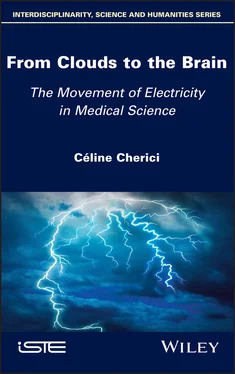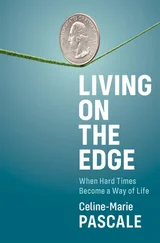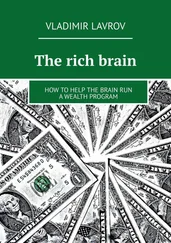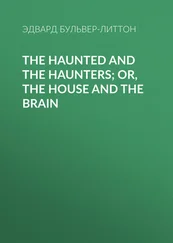1 ...6 7 8 10 11 12 ...20 Let’s take an interest in the temporality of these experiments: Nysten started at 2.45 pm, and by 6.30 pm he was still stimulating the body. He pointed out that after four hours of galvanic applications, the only organ still sensitive to the action of this agent was the heart, since the sinuses of the pulmonary veins and the vena cava, essential parts of it, continued to contract. From 6.45 pm onwards, the contractions became completely imperceptible. While the body had been stimulated for four hours, death could no longer be considered as an instantaneous state but as a process taking place in stages. Moreover, the reaction of each organ to galvanism and the duration of their sensitivity were here the subject of a precise temporal determination, which went in the direction of a rationalization of the action of galvanism on the body. Such an approach can be seen in the tables shown in Figure 1.3.
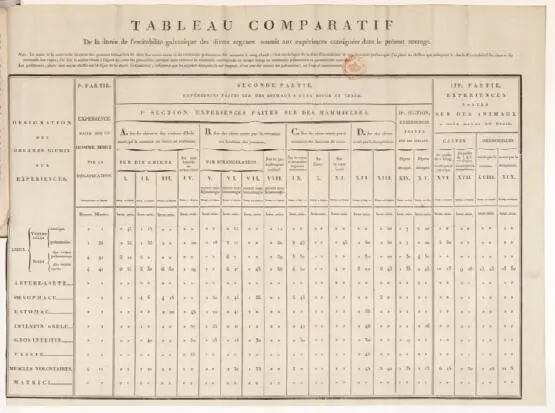
Figure 1.3. Comparative table of the duration of galvanic excitability of the various organs subjected to the experiments recorded in this book [NYS 02]
Using an electrophysiological approach, Nysten compared the excitability times of human organs to those of animals. What did he conclude from his experiments? The long influence of comparative anatomy made itself felt in his conclusions: he advocated a unity of the laws of Nature according to which there is no reason why galvanization should have different effects on humans or warm-blooded animals. Yet the context of the death, the state of the body, human or animal, were all conditions that influenced these effects. He therefore highlighted the importance of the experimental protocol, which must include everything that is relevant to the information on the experimental model chosen. Indeed, on a man who died a violent, natural death or disease, or on an animal, stimulation influenced differently the energy of the heart, its durability and its sensitivity. The experimental protocol could be refined, specified in relation to the specificities of the organs’ reactions to stimulation. For example, the high frequency of stimuli caused an inhibition of activity that need not be confused with permanent cessation. These were all mechanisms that the galvanist needed to take into account. Nysten, by maintaining a central status in the process of dying, paved the way to experiments of restarting its activity beyond the limits of life. Between the heart or the brain, which organ determined the state of death? The brain, in the perspective of the naturalization of the intellectual faculties, was becoming increasingly important. So he argued for the place of the primary organ with the heart. Nysten was involved in these quarrels:
But I have not only determined the contractions of the heart longer than the physicists of Turin, I have also proved that this organ is of all, the one which retains the longest faculty of contracting under galvanic influence, and I have thereby retained for it the title of ultimum moriens 5 which it was about to lose. [NYS 02, p. 35, author’s translation]
The main conclusion being that galvanic action, in addition to maintaining the excitability of the heart, brings it back when it is ready to die:
The sinus of the pulmonary veins was apparently insensitive to any excitation, either mechanical or galvanic; but its excitability, so to speak extinguished, was revived by galvanic action, to the point that it then contracted not only by this action, but also by that of mechanical agents […]. [NYS 02, p. 36, author’s translation]
Bichat, in the second part of his book Physiological Researches On Life and Death [BIC 99–00], recorded his work on galvanism, discussing the influence of brain death on heart death in the context of the ultimum moriens debates. He reported on five experiments in which he tended to show that the heart does not immediately stop working when brain function is interrupted. He saw galvanism as a technique to shed light on the relationship between the heart and the brain:
There is another kind of experiment similar to these, which can still shed light on the relationship between the heart and the brain: that of galvanism. I will not overlook this means of proving that the first of these organs is still currently dependent on the second. [BIC 99–00, p. 393, author’s translation]
Bichat chose to experiment on the animal model of the frog and followed a classical experimental protocol, made of zinc and lead metal frames and organic materials:
I have equipped several times in a frog, on the one hand his brain with lead, on the other hand his heart and lower limb muscles with a long zinc blade which touches the first one by its upper extremity, and the second one by its lower extremity. [BIC 99–00, p. 394, author’s translation]
Although he established communication between the muscles and the brain, no acceleration was noticeable in the heart while it was still beating, and no movement occurred after it stopped. His physiological research focused not only on the passage from life to death, its different stages and the possibility of modifying its parameters through stimulation, but also on the interactions between organs. Following the idea that every body is subject to the harmonious functioning of the systems of the animal economy such as the nervous, cerebral or blood systems, Bichat explored the idea of hierarchy to determine which organ lives or functions the longest between the heart and the brain. In addition, the Société Médicale d’Émulation de Paris , which he founded in 1797, rewarded the text written by Malacarne (1744–1816) [MAL 03, 98, 99] in 1802 on the physiological landscape formed by the different physiological systems. It is a fundamental theme for the understanding of brain and heart physiology. Does the brain directly influence the heart? Bichat also investigated whether there is an irritating movement of the heart that can be differentiated from cardiac movement:
1st to detach the heart from the chest; 2nd to place it in contact, with two different metals, by two points on its surface, or with portions of flesh armed with metals; 3rd to make the armatures communicate by a third metal. [BIC 99–00, p. 396, author’s translation]
Given the proximity of the physiology of warm-blooded animals and that of humans, he experimented on the former. However, the brain-heart circuit does not give specific movements:
These different considerations, are a manifest proof that the communicating branches of the ganglions, should no more be considered as a continued nerve, than the branches, which pass from each of the cervical, lumbar and sacral nerves, to those which are immediately above and below them. In fact, notwithstanding these communications, each pair of the latter mentioned nerves is regarded as a separate pair. [BIC 99–00, p. 397, author’s translation]
This lack of movement of the heart in relation to the brain would indicate that the two organs die independently 6 . Bichat, in order to avoid movements due to the effect of galvanic irritation and artifacts due to experimental protocols, first placed his circuit and established communication in a second step:
2dly in dogs and guinea pigs, I have repeatedly applied the metals, first to the brain and the heart, then to the trunk of the spinal marrow, and the heart; then to the par vagum and the heart. The communication being made, was followed by no apparent result. 3dly, on making the communication between the metals, when applied to the cardiac nerves and the heart there was no very sensible motion. [BIC 39, p. 261]
Читать дальше
